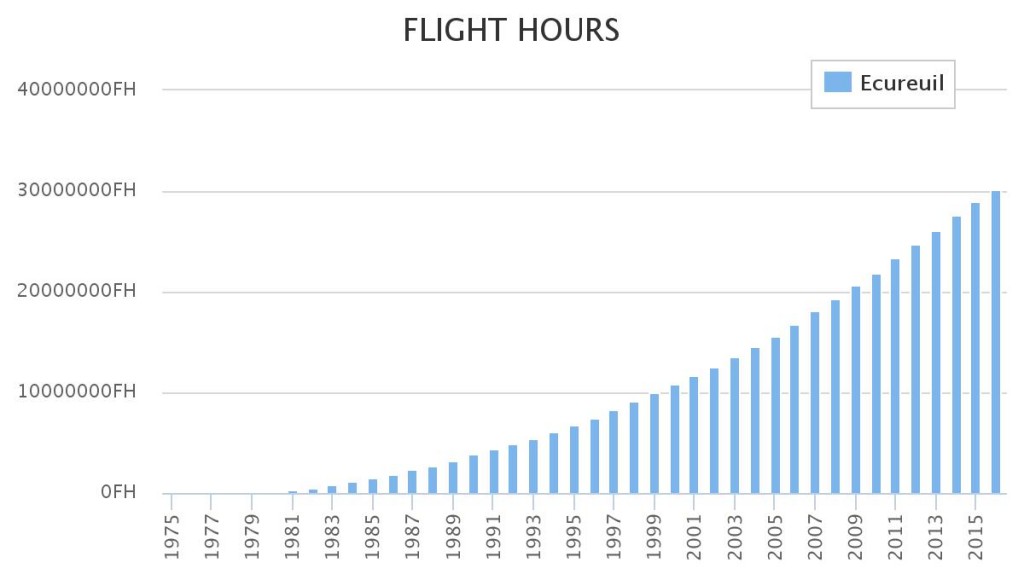EASA Consult on Proposed AD on AS350B3 / H125 Hydraulics
The European Aviation Safety Agency (EASA) is consulting on a Proposed Airworthiness Directive (PAD 16-140) on all Airbus Helicopters AS350B3/H125 equipped with a dual hydraulic system (except those that embody mod 074719 and mod 074622). The AS350B3 is a popular type, particularly for small under slung load tasks (e.g. seismic work) and operation at high altitude due to its performance (previously demonstrated by Didier Delsalle‘s landing [twice] on the summit of Everest in 2005, a feat never achieved before or repeated since).

AS350B3 now marketed as the H125 (Credit: Airbus Helicopters)
EASA say:
During the past 5 years, four in-service occurrences were reported concerning certain AS 350 B3 helicopters, equipped with a dual hydraulic system, that did not involve any component malfunction or failure, but where a crew human factor was determined to have been a contributing cause. These events were assessed from the man-machine interface standpoint, and it was recognized that a pilot could forget to reactivate the HYD switch or the ACCU TST button during a hydraulic test.
This depressurises the servos.
Improper setting of the HYD switch and ACCU TST button significantly increases the control load necessary to generate sufficient TR thrust for take-off.
This condition, if not corrected, could cause the pilot to take off without recognising the omission, preventing safe completion of the manoeuvre, possibly resulting in damage to the helicopter and injury to occupants.
Airbus Helicopters had first issued a Safety Information Notice in August 2014 in advance of initially developed a new Rotorcraft Flight Manual (RFM) procedure for the functional check of the Yaw Load Compensator. This was published in association with Service Bulletin (SB) AS350-67.00.66. At least one of the accidents is claimed a fatal HEMS accident in the US which we have discussed previously (although the US NTSB is yet to issue their final report).
EASA explain:
The advantage of the new procedure is that actuating the Yaw Servo Hydraulic Switch during the run-up hydraulic check is no longer necessary. Consequently, EASA issued AD 2015-0178 to require the new procedure to be incorporated in the normal procedures section of the applicable AS350 B3 RFM.
However:
Based on further analysis of the reported occurrences, it has been determined that, despite the RFM change introduced by AD 2015-0178, a critical scenario may still develop [due to] a human error…
Fortuitously, rather than simply reply on an improved procedure Airbus Helicopters had in parallel developed mod 074622 and mod 074719 (and corresponding SB AS350-67.00.64 and SB AS350-67.00.65) which:
- Trigger a caution when the hydraulic switch on the collective grip is set to OFF
- Add an indicator light to indicate the status of the dual hydraulic system
- Replace the bistable ACCU TST push button with a monostable push button.
Because their have been further occurrences since the RFM AD on aircraft without these modifications, EASA are now proposing making these modifications mandatory too, with a 12 month compliance time from the effective date of the AD.
The Proposed AD will be closed for consultation on 28 October 2016. Irrespective of the result of this consultation, proactive operators would be wise to assess (or re-assess) the benefit of embodying these modifications.
UPDATE 13 October 2016: It is worth noting that the AS350 family has now achieved an incredible 30 million flying hours:
UPDATE 4 November 2016: The AD is issued: AD 2016-0220


Recent Comments